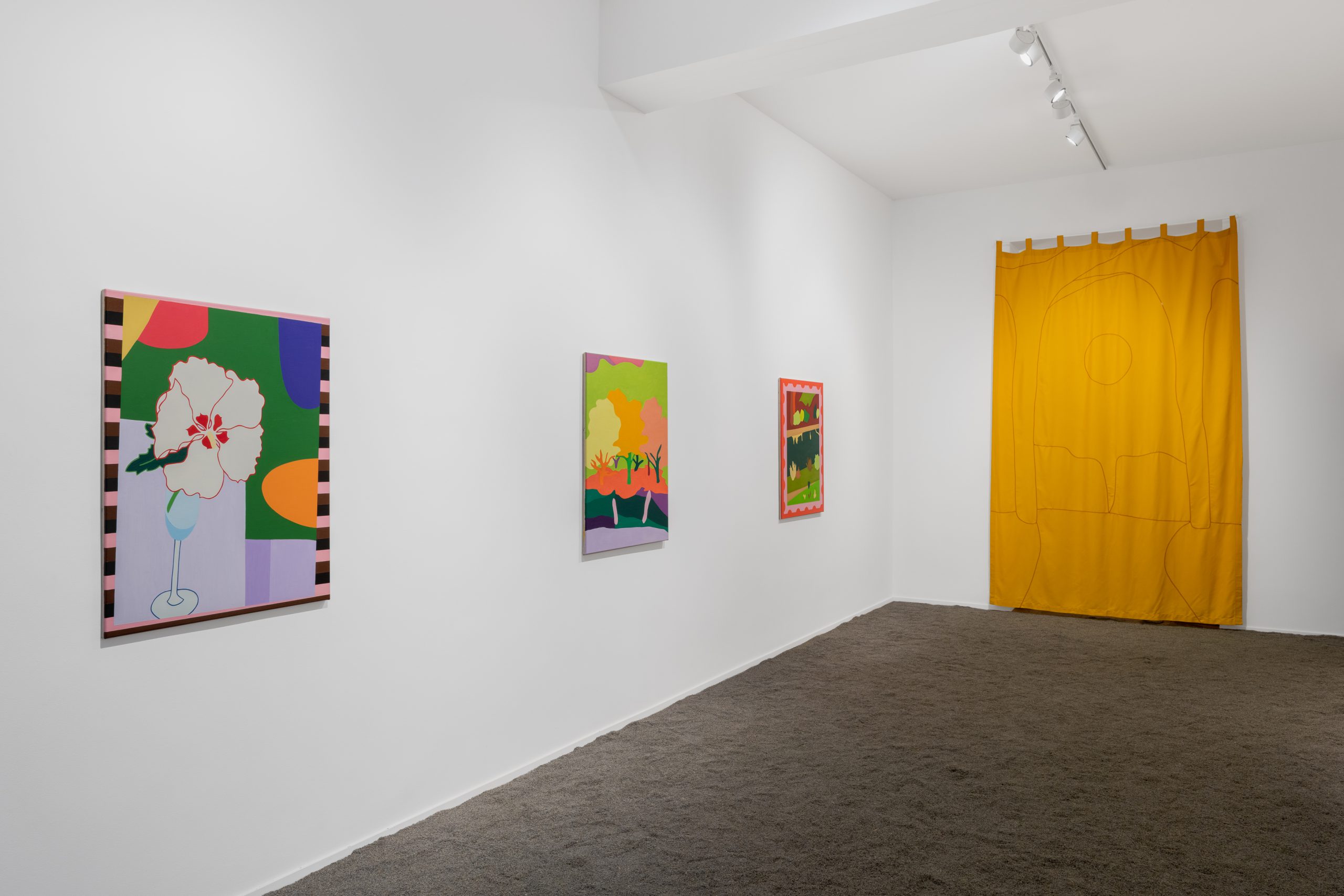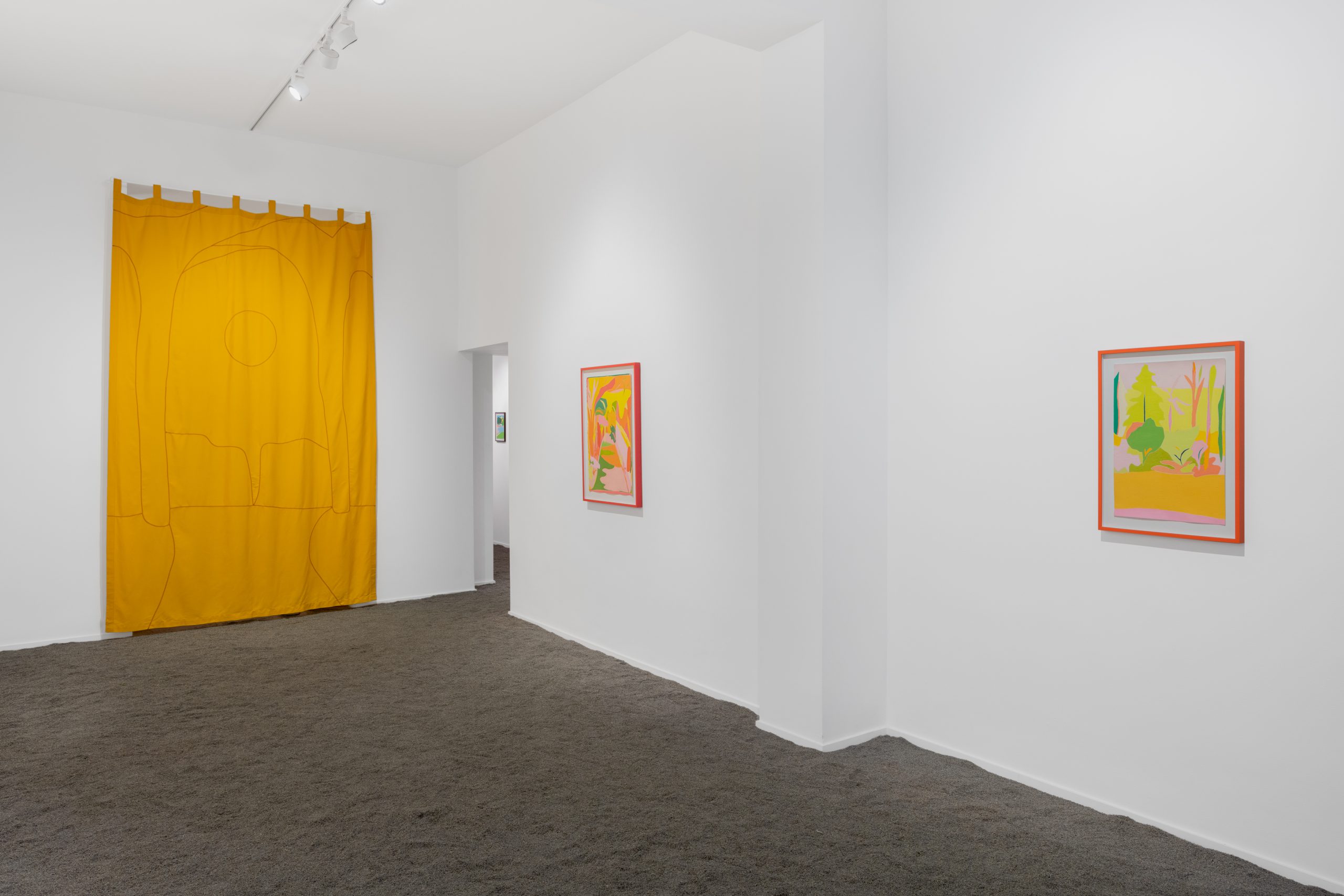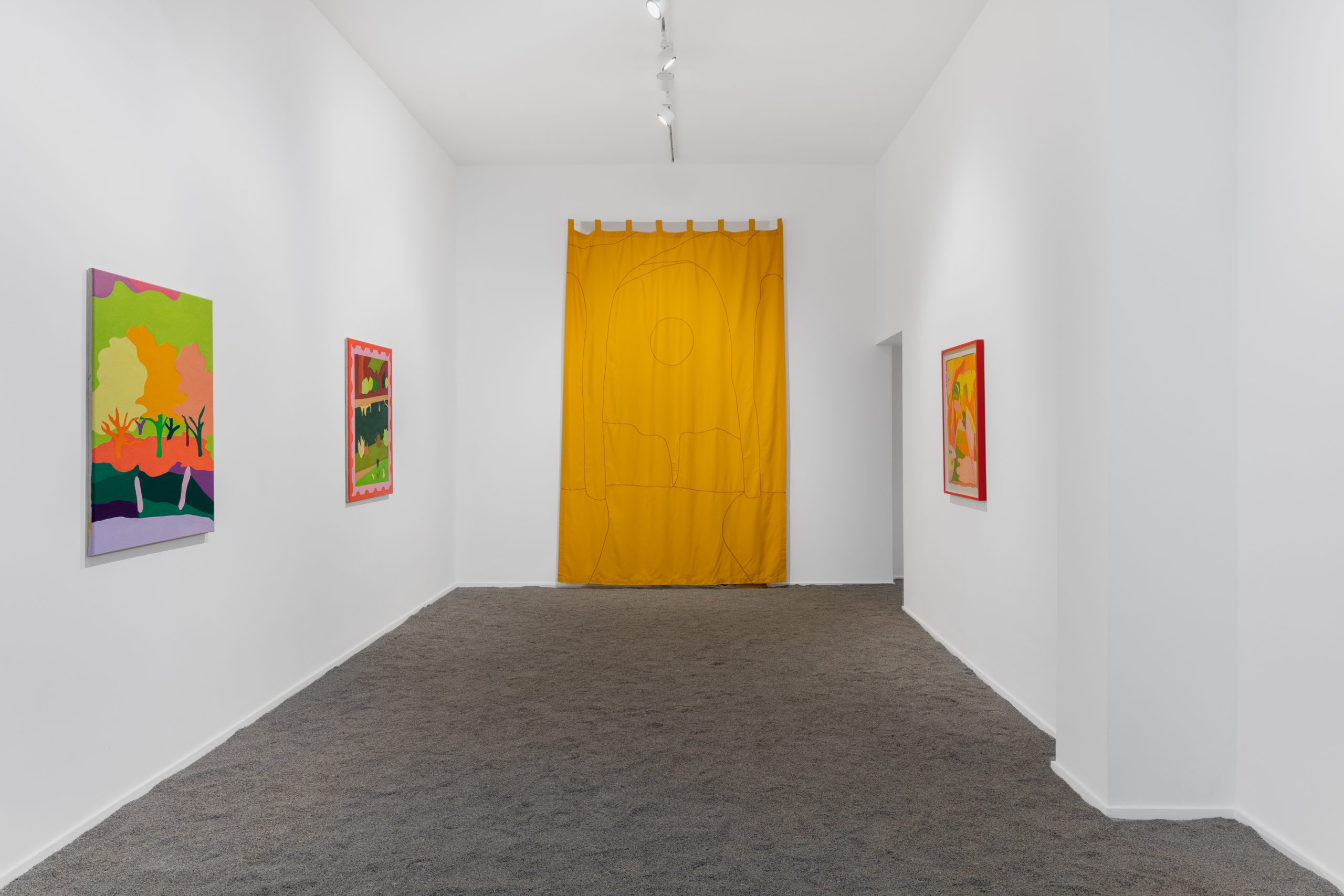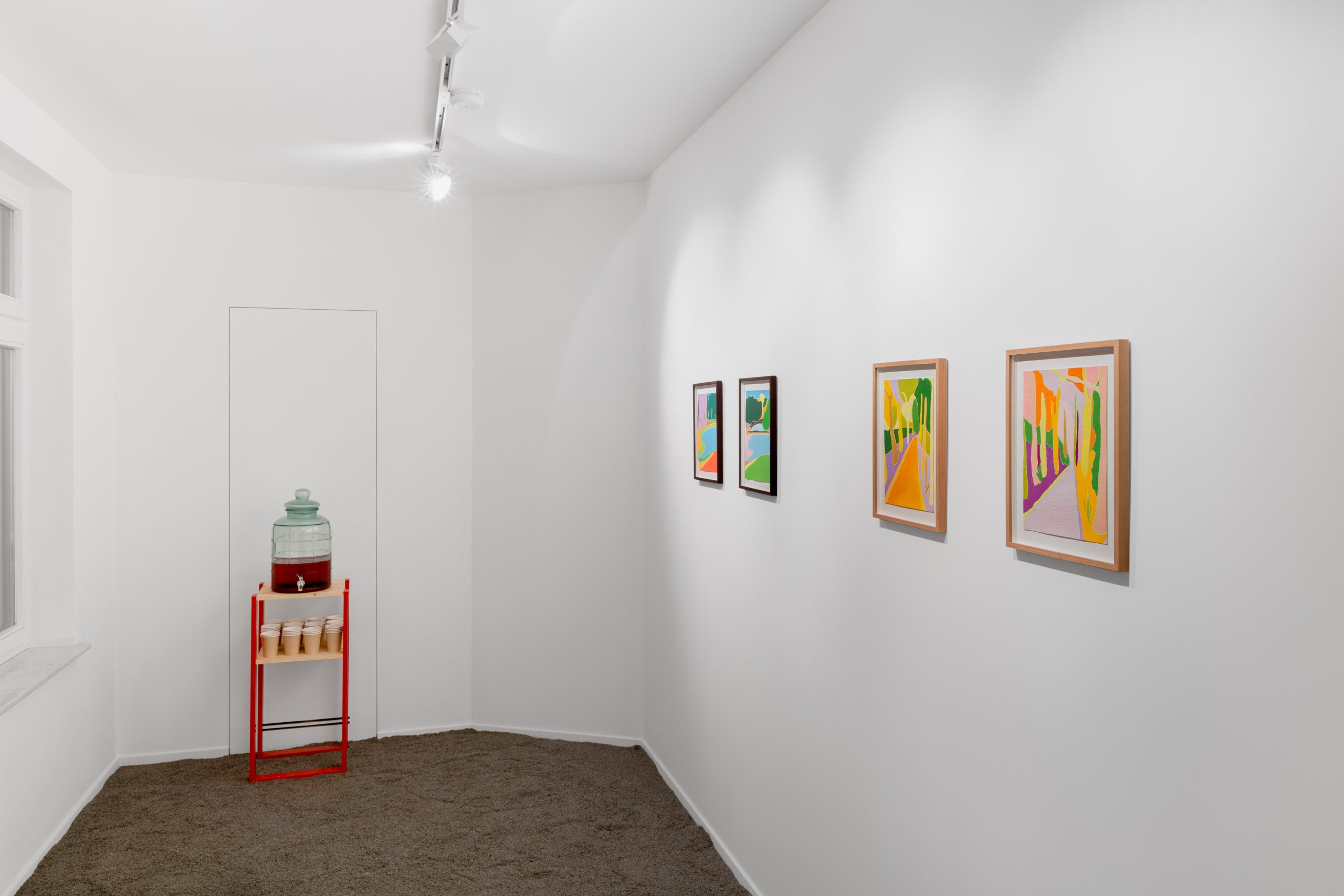Notes by Evelyn Simons
It has been a bit over a year now since Tessa Perutz has changed the decor of her daily life from New York to Brussels. Since, she has ventured out into various regions of Belgium and its neighbouring countries, revisiting longstanding memories as well as discovering new territories. This exhibition, bearing the illustrious title Jardin du Midi is a testimony of this spontaneous exploration: pinpointed with anecdotes, hasty jottings and existential ponderings. Simultaneously, this body of work stands as an invitation: a heartfelt welcoming of wandering bodies and minds into a momentum of sensorial contemplation.
The gallery exudes the unmistakable scent of lavender, spread in abundance over the floor for you to wade into. The calming and soothing effects of this lush carpet instantly evoke a sense of tranquillity, a paradise of serenity.
Perutz is a landscape painter. She follows a hefty tradition by doing so, but liberates herself from the shackles of this legacy with each sketch, each brushstroke, each sign or pictorial gesture. Her works feel extremely fresh and free, as if they are not driven by a canon, nor want to be iconoclastic. They are paintings without be overtly self-aware that they are.
Her landscapes are driven by centrifugal movement. They lure you in with their appealing and buoyant colours, only to disorient you once your gaze is hooked. Trees, bushes, lakes, paths and flowers are – on a closer look – difficult to discern. Perutz paints generously, and with utter precision. Paint is applied in thick but homogenous layers, the compositions seem to have been made up of cutouts. Their whimsical outlines transform volumes into surrounding negative spaces and vice versa, conveying a density in which every element stands on the same plane. This plays out a tension between idyll and confusion, whirling up the perspective to make you feel encapsulated by these opaque universes.
Perutz’ body of work at large is shaped by processes of conceptualization, intuition and execution; phases that don’t occur linearly but that intertwine and inform each other. Visually, this translates into echoes of paintings making appearances in others, in playing with scale and repetition – both in subject and in colours, in mirroring and in excavating the potential of seriality. This unearthing of patterns and motives from the artist’s own repertoire, is inscribed by a fascination for signage and the impermanence of mark making. Collectively, they form an iconology that runs as an undercurrent through a personal biography. At the back of the space: a mystical portal on textile, an entry point. The pace is rhythmic, the timeline cyclical. Spaces are interchanged, memories fade, and events overlap.
Throughout this chronology of moments, the energy never dissolves but continues to flow.
Organic additions such as the sand in the paint as well as the lavender live their own lives – reminiscent of how memories are shaped by our unconsciousness – adding to the process of decay and reincarnation. The universal feeling of loss is soothed by this understanding, and expressed through the juxtaposition of seemingly opposing (but actually endlessly subsequent) natural phenomena such as the cycles of dusk and dawn, the moon and the sun.
Loved-ones left behind are partially healed with new friendships; a scenic walk at Bois de la Cambre merges with memories of upstate New York. This melting pot of crisscross-wired thoughts impregnates the cheerful colours in Jardin du Midi like a phantasmagoric place. The scenes bleed from the canvas, and their human absence expresses the psychedelic sensation of physical decentralisation. Jardin du Midi overlays lived with imagined or remembered realities, be they from the artist or from you. The environment takes you in as a disembodied vessel for new memories.







